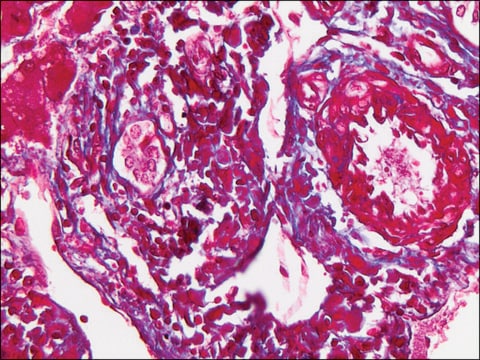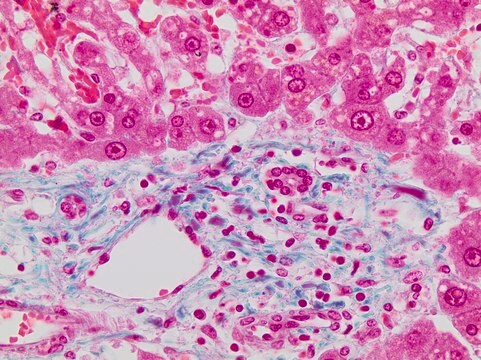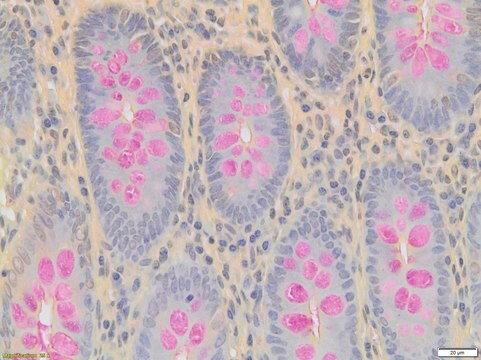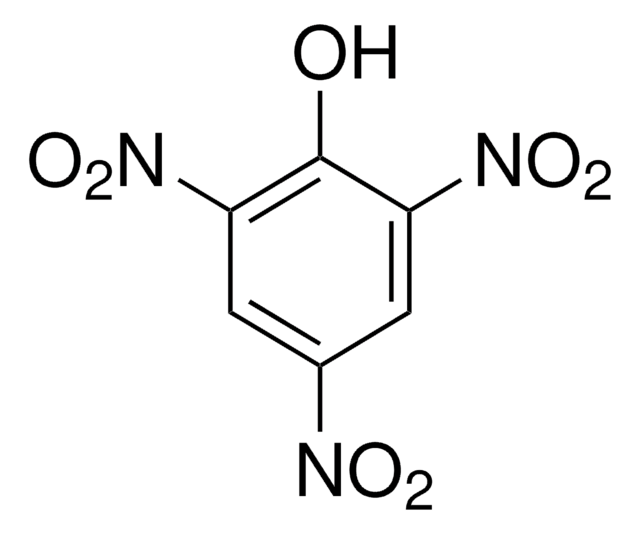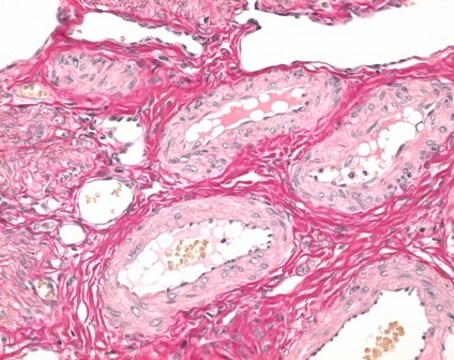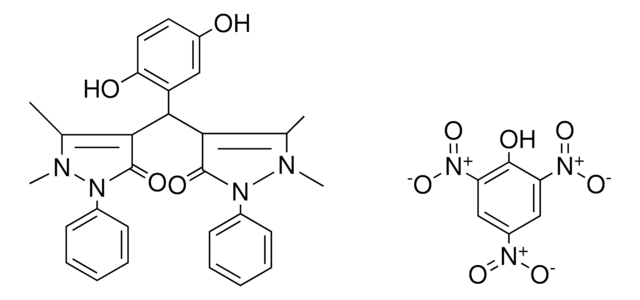HT10132
Bouin′s solution
histological fixative
Synonyme(s) :
Bouin’s fluid
Se connecterpour consulter vos tarifs contractuels et ceux de votre entreprise/organisme
About This Item
Produits recommandés
Durée de conservation
Expiry date on the label
Composition
acetic acid, 5%
formaldehyde, 9%
picric acid, 0.9%
Couleur
yellow
Application(s)
hematology
histology
Température de stockage
room temp
Vous recherchez des produits similaires ? Visite Guide de comparaison des produits
Description générale
Bouin′s solution is a noncoagulant yellow stain fixative that consists of saturated picric acid, formaldehyde, and acetic acid.
Application
Bouin′s solution is an excellent fixative for preserving soft and delicate structures. It is used as a mordant in various trichrome procedures.
Additionally, it has been used for the following purposes-
Additionally, it has been used for the following purposes-
- staining of human liver biopsy tissue samples for two-photon excited fluorescence (TPEF) and second-harmonic generation (SHG) imaging
- fixation of rat ovaries for the observing follicle cells using microscopy
- fixation of gonads of crab for morphological and histological analysis
Prepared with saturated picric acid, formaldehyde and acetic acid. Excellent fixative for preserving soft and delicate structures. Used as a mordant in various trichrome procedures.
Actions biochimiques/physiologiques
Bouin′s solution causes shrinkage of tissues when used as a preservative due to its picric acid component. It preserves morphological and nuclear information in tissues upon fixation.
Point d'éclair (°F)
Not applicable
Point d'éclair (°C)
Not applicable
Équipement de protection individuelle
Faceshields, Gloves, Goggles, type ABEK (EN14387) respirator filter
Faites votre choix parmi les versions les plus récentes :
Déjà en possession de ce produit ?
Retrouvez la documentation relative aux produits que vous avez récemment achetés dans la Bibliothèque de documents.
Les clients ont également consulté
Roman Leontovyč et al.
Scientific reports, 9(1), 1347-1347 (2019-02-06)
Trichobilharzia species are parasitic flatworms (called schistosomes or flukes) that cause important diseases in birds and humans, but very little is known about their molecular biology. Here, using a transcriptomics-bioinformatics-based approach, we explored molecular aspects pertaining to the nutritional requirements
Cengiz Yildiz et al.
Cryobiology, 84, 4-9 (2018-09-10)
Grafting of cryopreserved testicular tissue is a promising tool for fertility and testicular function preservation in endangered species, mutant animals, or cancer patients for future use. In this study, we aimed to improve the whole neonatal mouse testicular tissue cryopreservation
Won-Young Lee et al.
Animal reproduction science, 182, 1-8 (2017-05-04)
Spermatogenesis begins at puberty and continues throughout a male's life. This process is initiated and maintained by spermatogonial stem cells in the seminiferous tubules, and these cells produce haploid spermatozoa. Markers of male germ cells have been fully identified in
Suzana Ulian-Benitez et al.
PLoS genetics, 13(8), e1006968-e1006968 (2017-08-29)
Neurotrophism, structural plasticity, learning and long-term memory in mammals critically depend on neurotrophins binding Trk receptors to activate tyrosine kinase (TyrK) signaling, but Drosophila lacks full-length Trks, raising the question of how these processes occur in the fly. Paradoxically, truncated
Xiu-Tang Cheng et al.
The Journal of cell biology, 217(9), 3127-3139 (2018-04-27)
Despite widespread distribution of LAMP1 and the heterogeneous nature of LAMP1-labeled compartments, LAMP1 is routinely used as a lysosomal marker, and LAMP1-positive organelles are often referred to as lysosomes. In this study, we use immunoelectron microscopy and confocal imaging to
Notre équipe de scientifiques dispose d'une expérience dans tous les secteurs de la recherche, notamment en sciences de la vie, science des matériaux, synthèse chimique, chromatographie, analyse et dans de nombreux autres domaines..
Contacter notre Service technique